Year 9 Proportion Worksheets
Best Value for Money - the Unitary Method
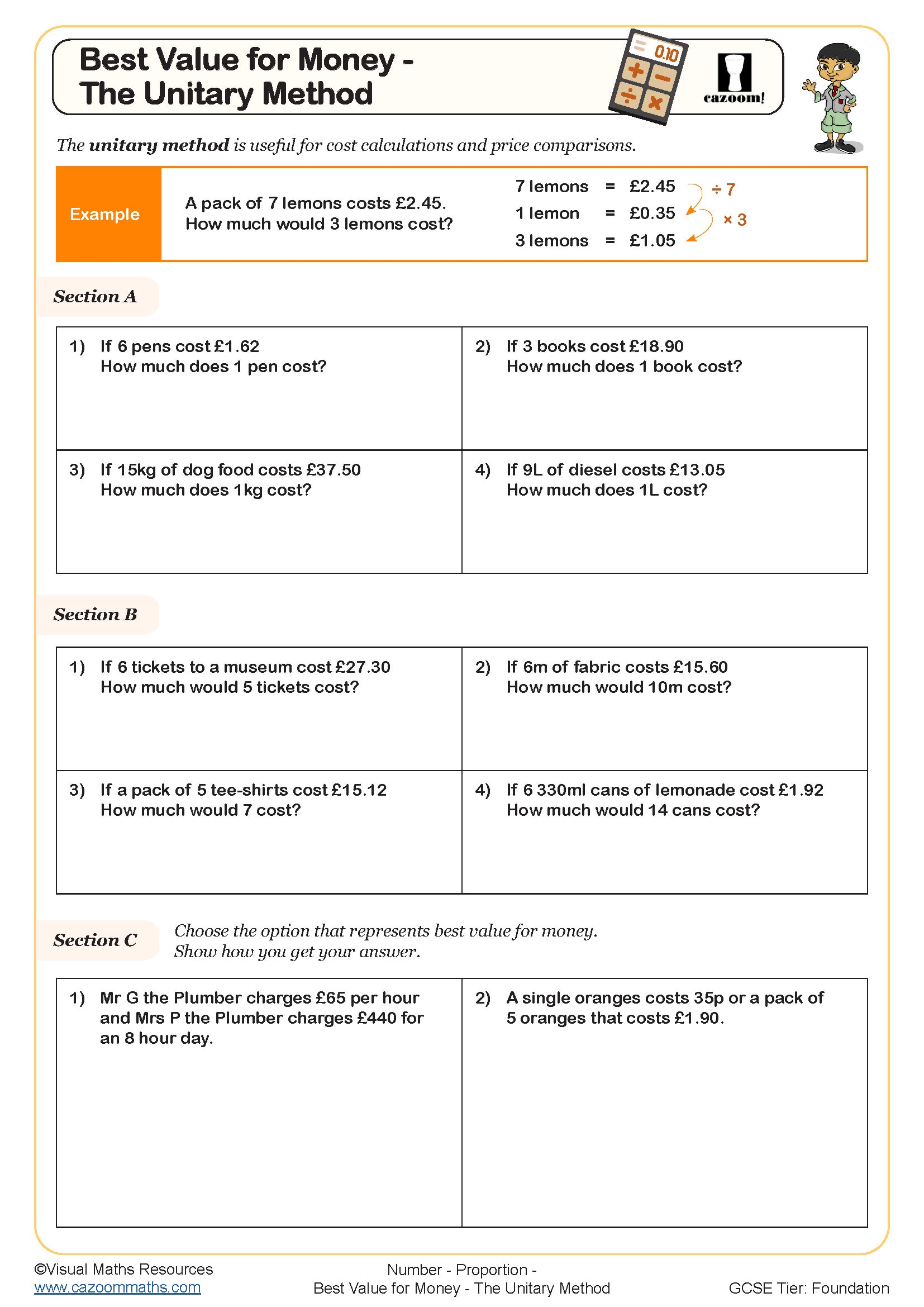
Charge Graphs (A) - Drawing and Interpreting
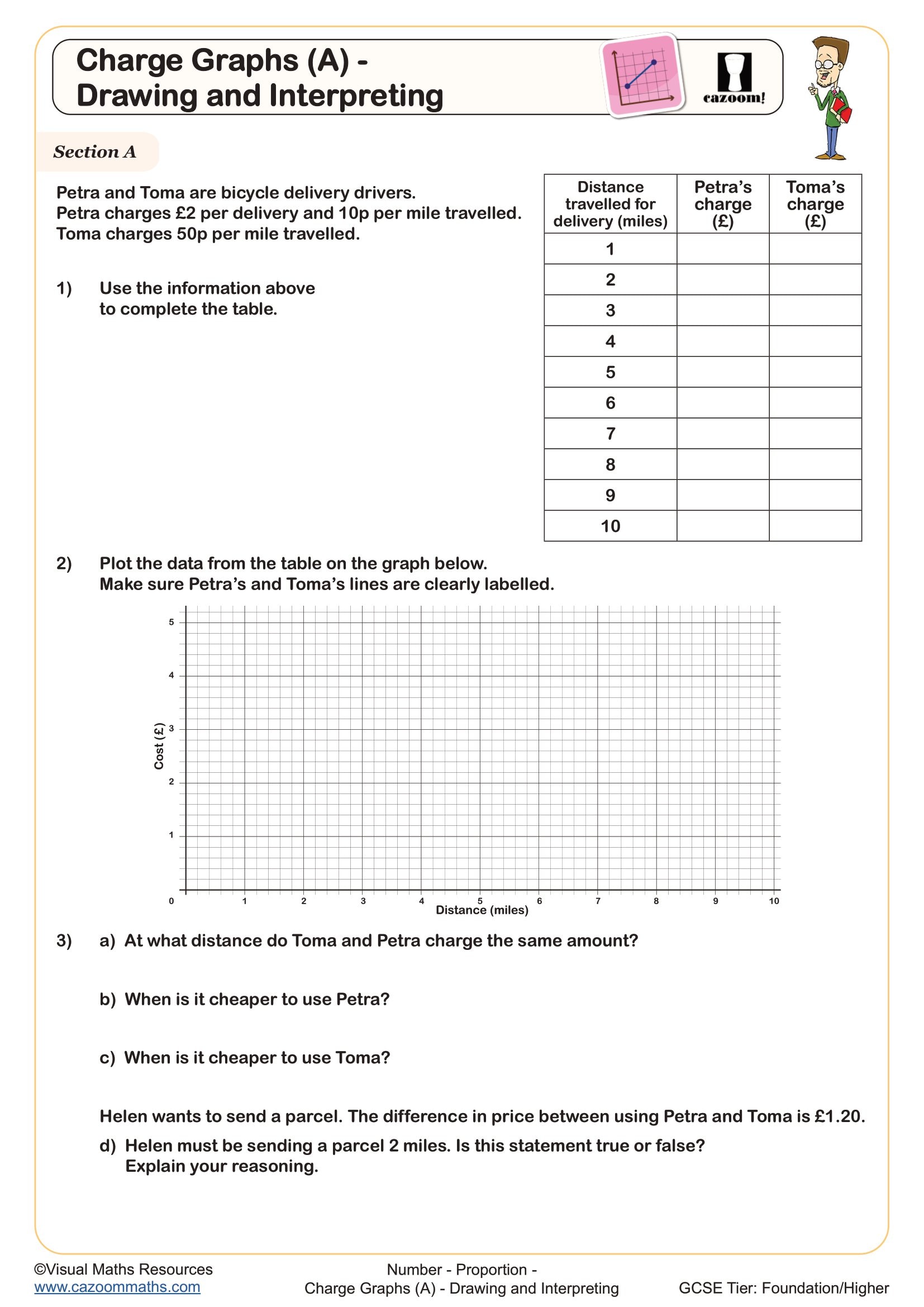
Charge Graphs (B) - Equations
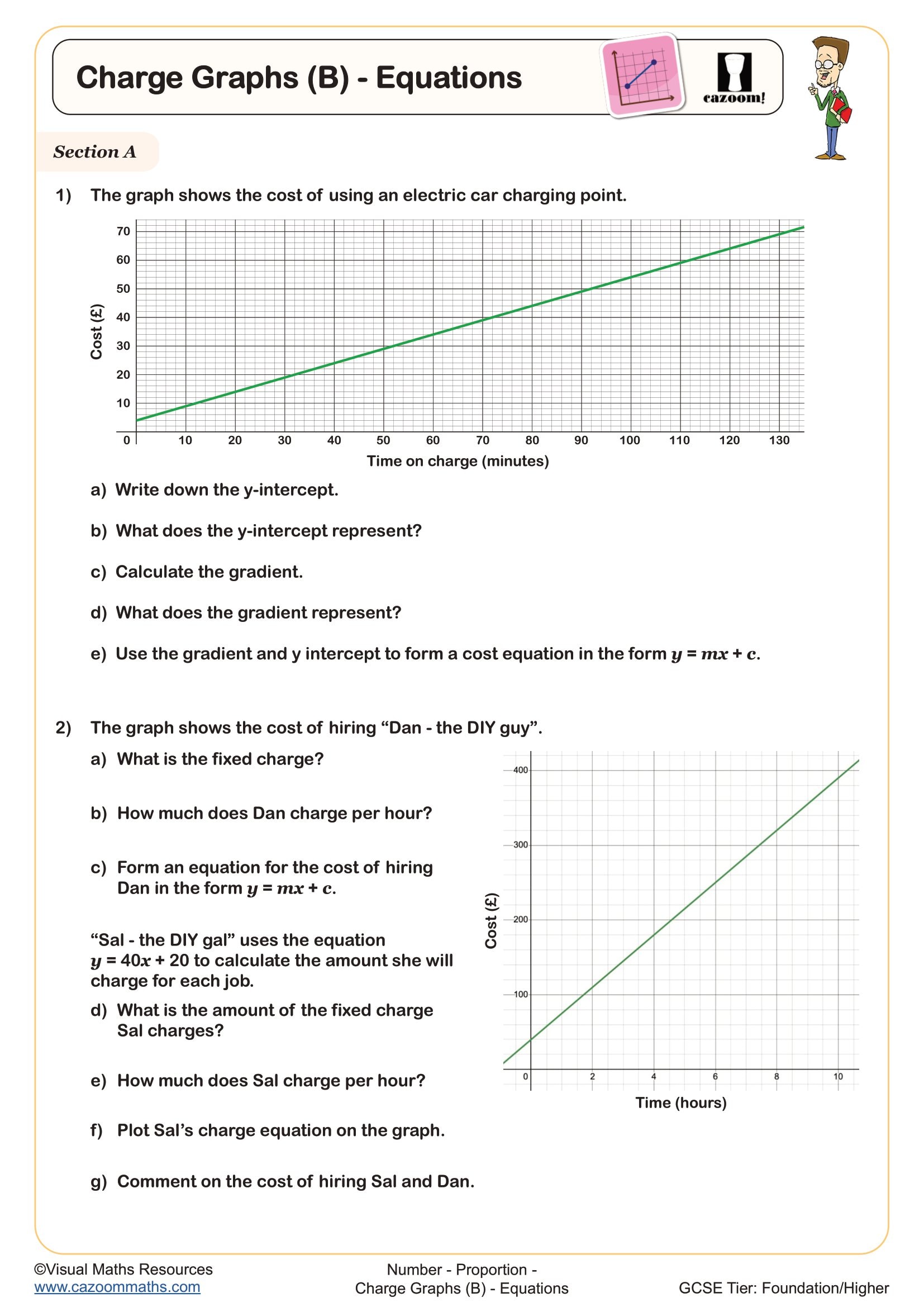
Direct Proportion A
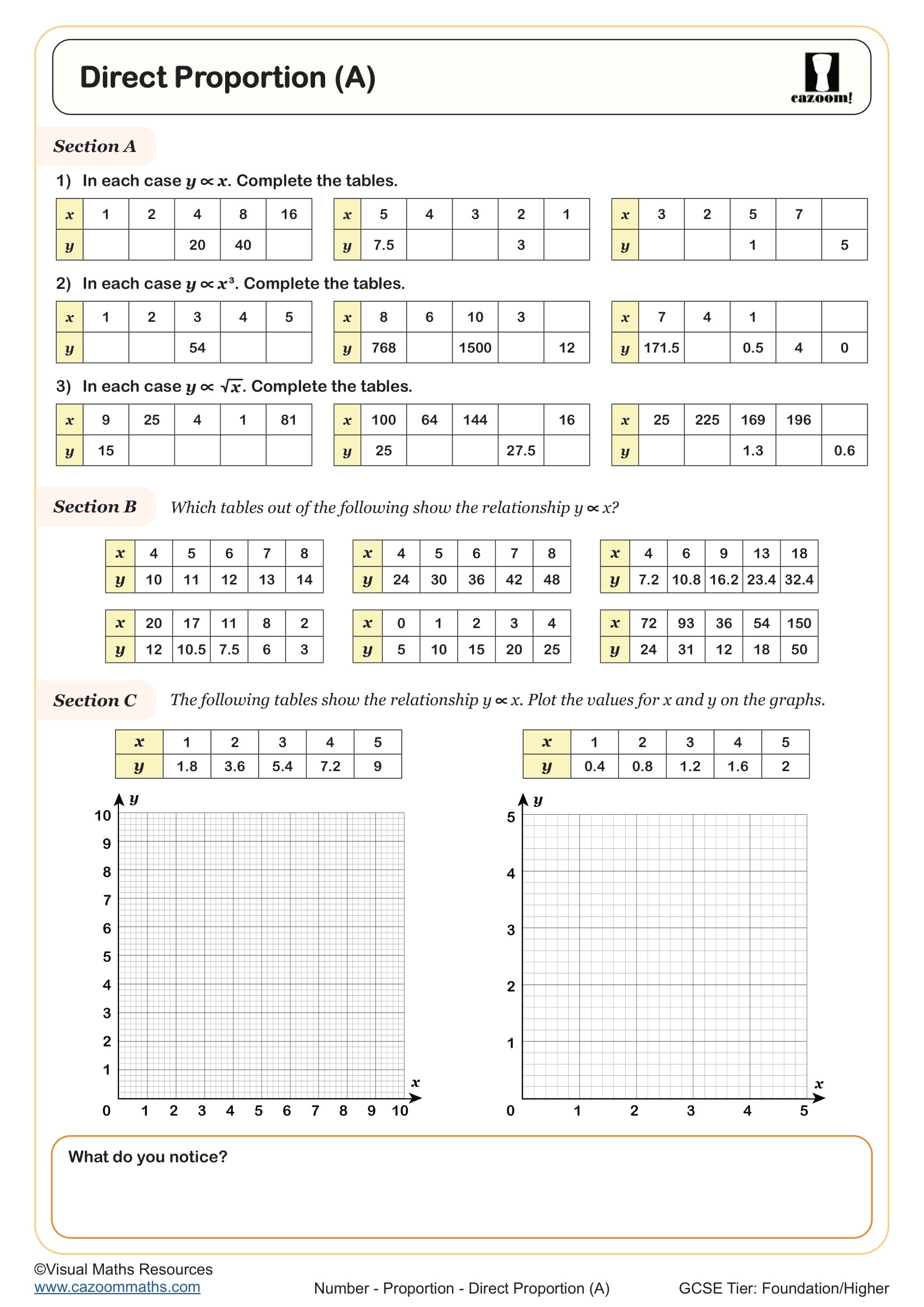
Drawing Conversion Graphs
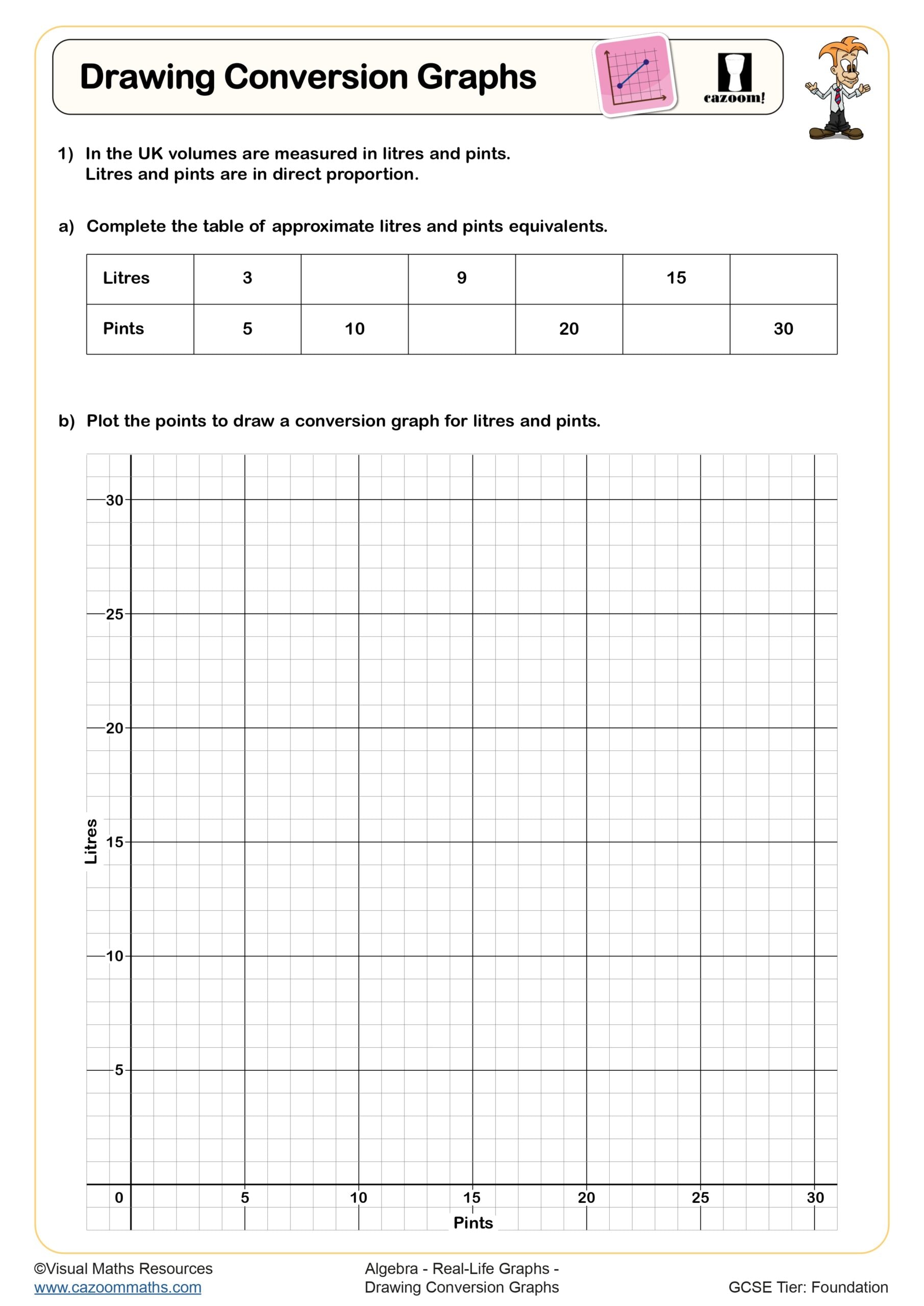
Equations of Proportionality
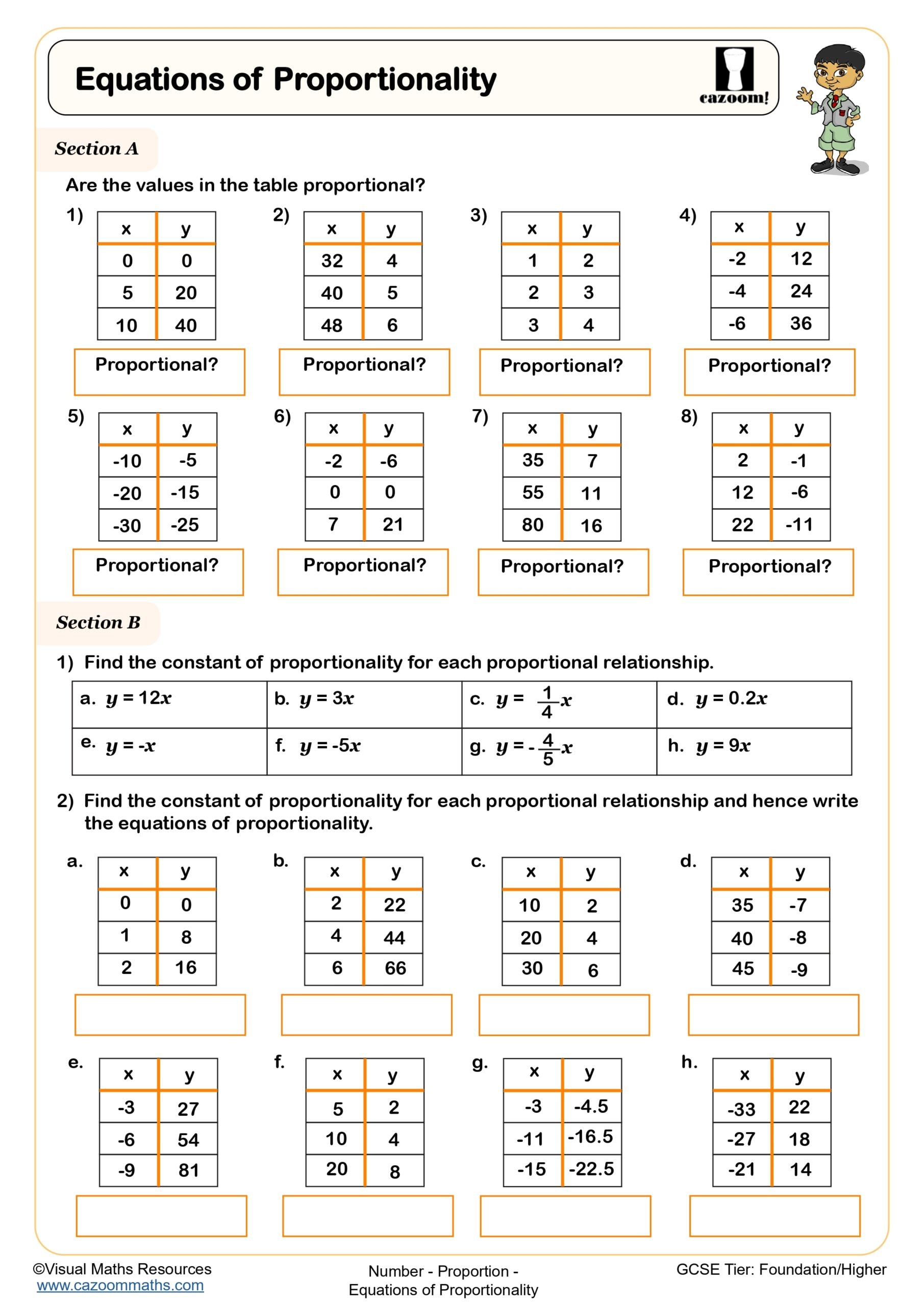
Exchange Rates
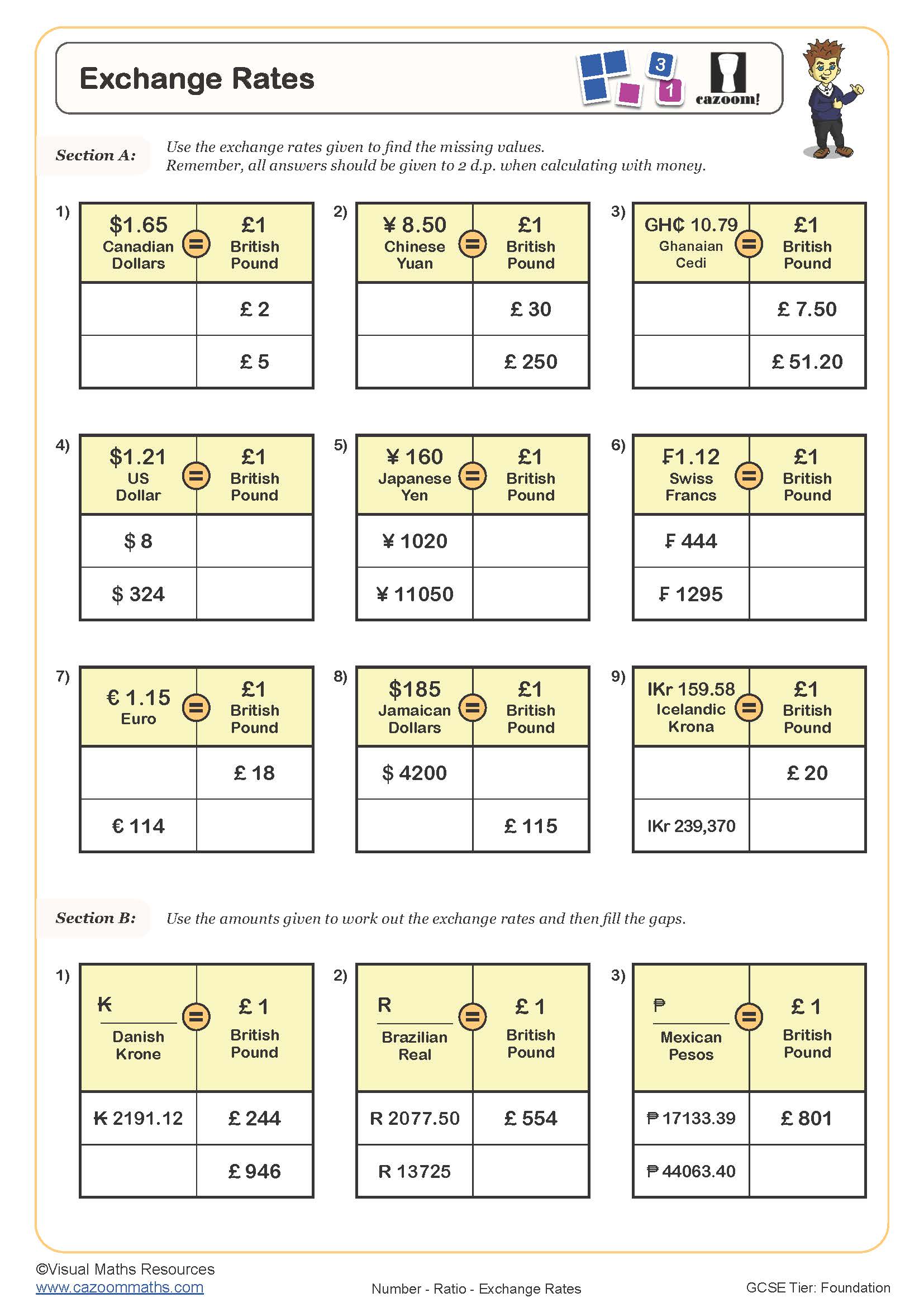
Factory and Worker Proportion Problems
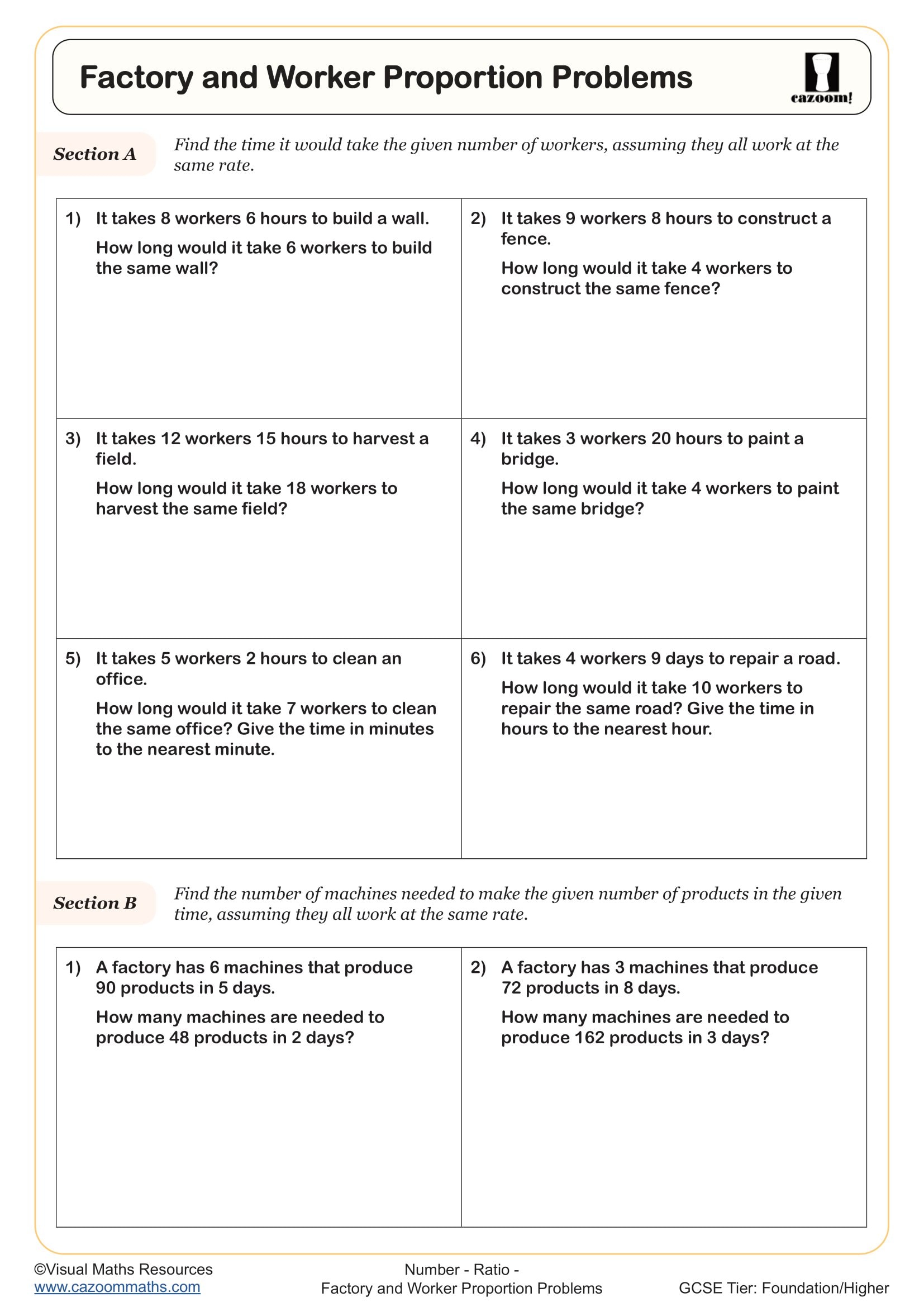
Recipes (C)
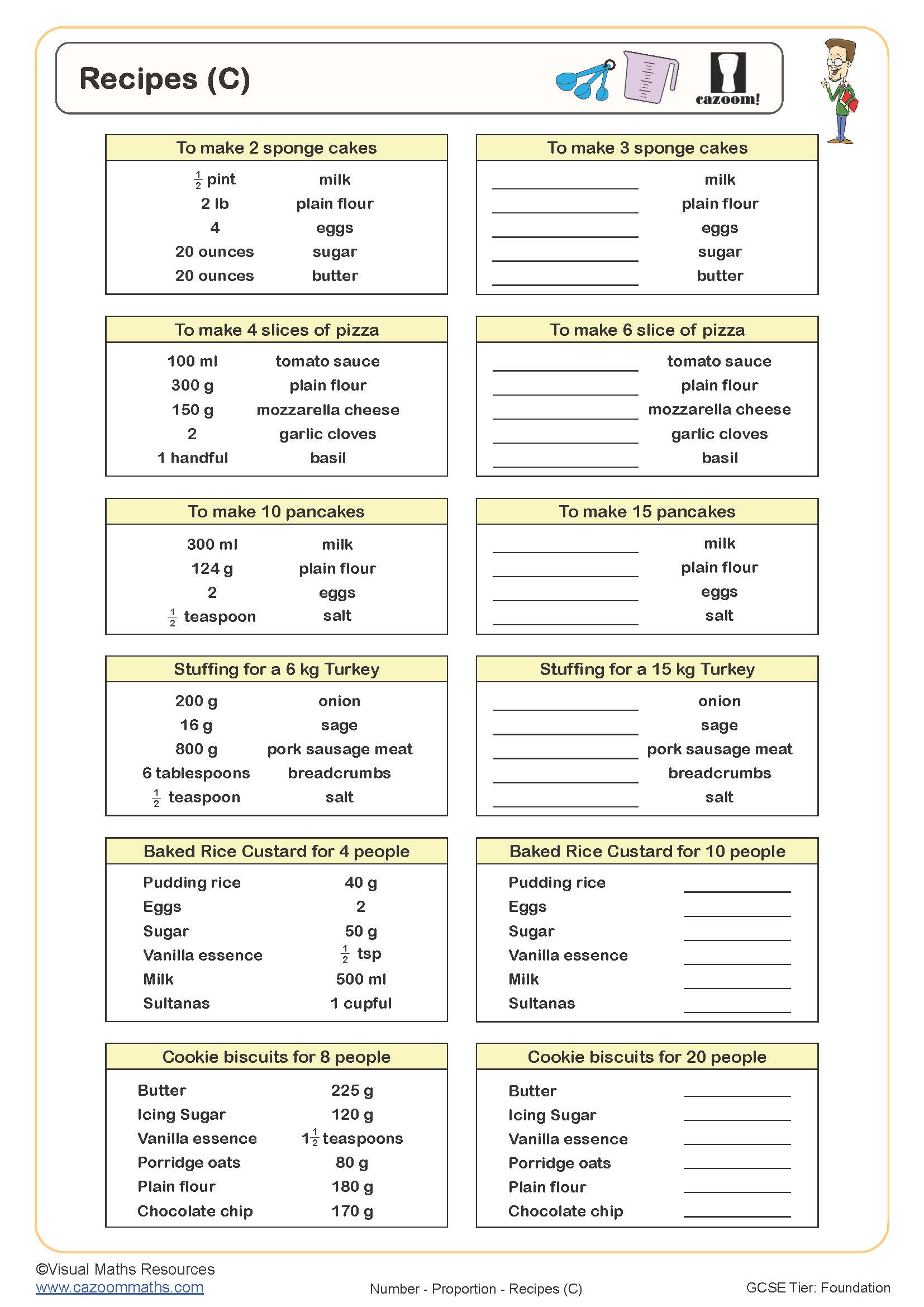
Unit Rates Involving Fractions
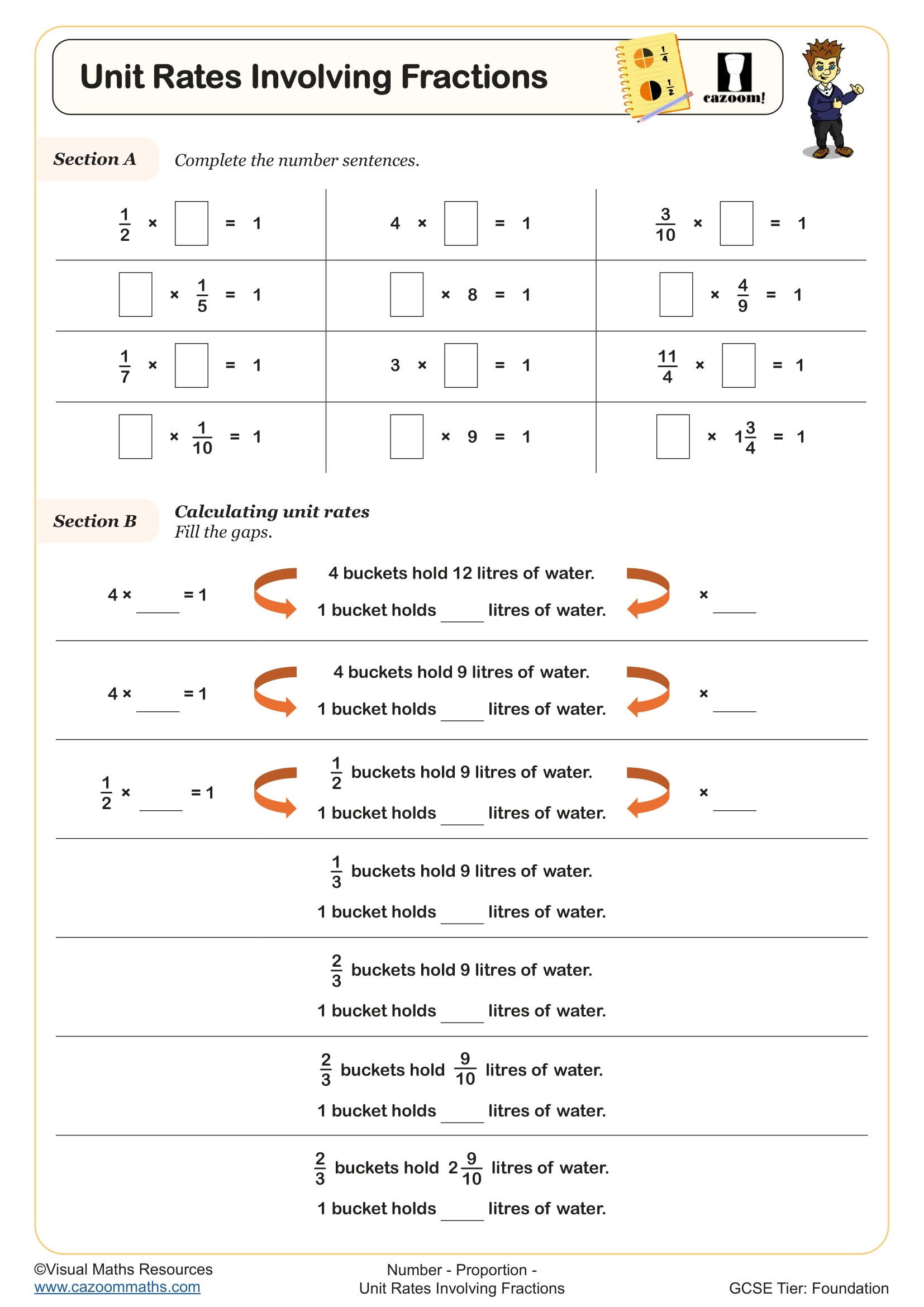
Using Conversion Graphs
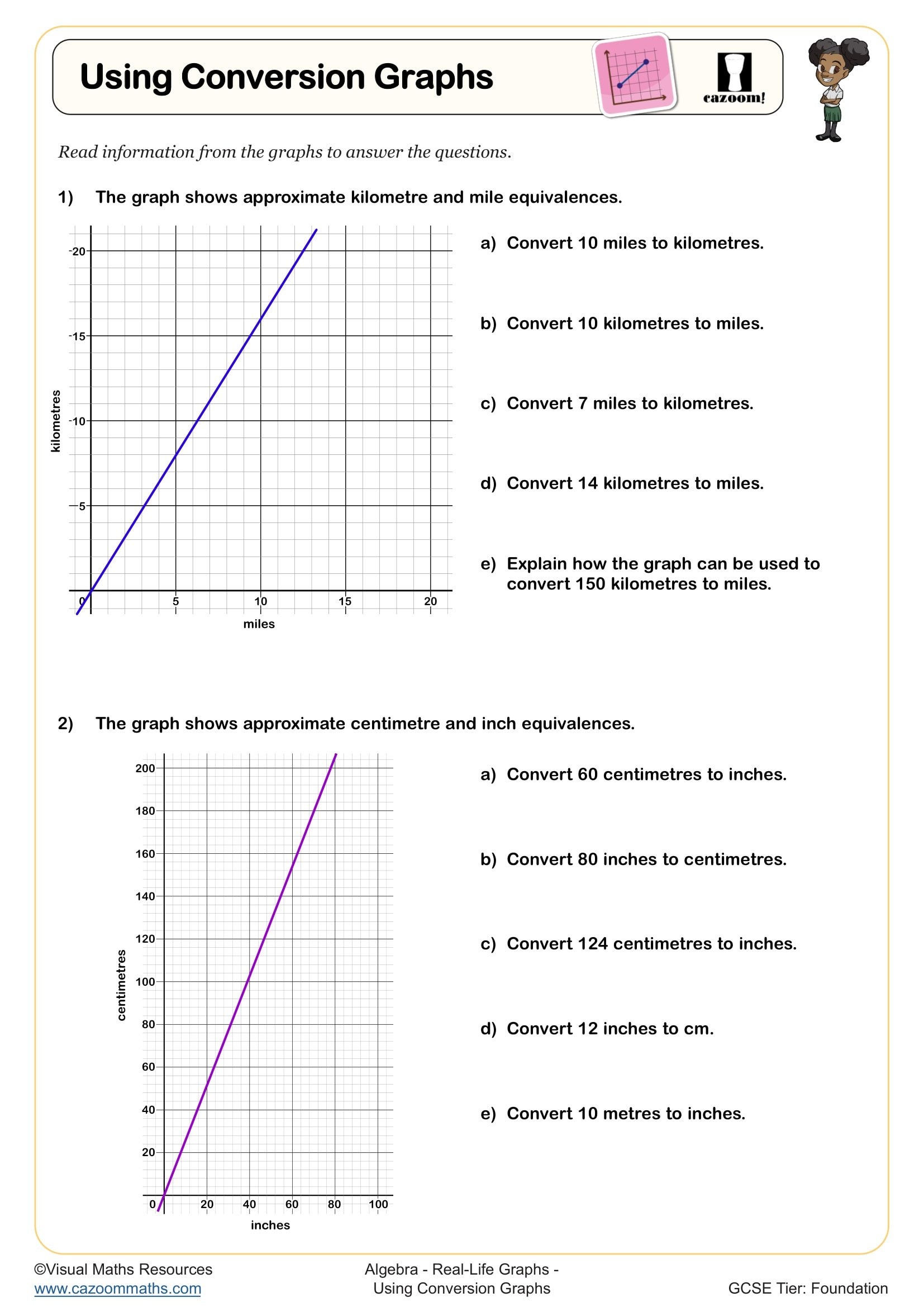
What Happens When Students Practise With Ready-to-Print Number Worksheets ?
The fundamental mathematical principle of proportional reasoning connects basic arithmetic operations to advanced algebraic reasoning, which students need for their future mathematical education. The students who move from Year 8 face progressively difficult situations which need advanced evaluation of how different amounts relate to each other. The practice of these materials leads to mathematical maturity because it shows students different ways to solve problems in multiple situations. The subject becomes fully understood through the progression from basic ratio sequences to intricate proportional equations. Students who solve proportion problems regularly develop analytical thinking abilities, which help them solve scientific problems and economic calculations.
Specific learning benefits include:
• Master unitary method calculations
• Develops graphical interpretation skills
• Strengthens algebraic manipulation techniques
• Enhances problem-solving flexibility
• Builds multi-step reasoning abilities
• Connects numerical and visual representations
• Improves mathematical communication
Curriculum Coverage: How Year 9 Proportions Worksheets Fit Every Lesson
The entire collection starts with numerical examples, which lead to pictures before moving on to abstract algebraic representations to guarantee full comprehension at each step. The worksheets contain complete worked solutions which present different methods for solving problems and show important steps in decision-making. Students learn to link numerical patterns with graphical representations by using visual models while their formal mathematical reasoning skills develop through algebraic exercises.
The worksheets in this collection include:
• Best Value for Money - the Unitary Method — applies proportional reasoning to compare prices and quantities efficiently
• Drawing Conversion Graphs — constructs accurate graphs linking different measurement units through proportional relationships.
• Equations of Proportionality — explores algebraic representations of direct and inverse proportional relationships.
• Exchange Rates — calculates currency conversions using multiplicative reasoning and proportional thinking.
• Recipes (C) — scales ingredient quantities, maintaining correct proportions for different serving sizes.
• Unit Rates Involving Fractions — handles complex rate calculations involving fractional quantities and mixed numbers.
• Using Conversion Graphs — interprets graphical information to solve practical conversion problems accurately.
• Charge Graphs (A) - Drawing and Interpreting — creates and analyses graphs showing proportional charging structures.
• Charge Graphs (B) - Equations — derive algebraic equations from proportional charging scenarios.
• Direct Proportion A — investigates relationships where quantities increase at constant rates.
• Factory and Worker Proportion Problems — tackles inverse proportion in workforce and production contexts.
Why Digital Resources Don’t Replace KS3 Proportion Worksheets
Math departments like these resources because they are ready to use in class and cover a wide range of topics. The right amount of procedural practice and conceptual exploration keeps all learners engaged while still giving them the right level of challenge. Different questions on each worksheet help teachers help students who are having trouble while also challenging students who are doing well with more difficult problems. Answer sheets save teachers a lot of time when grading, so they can spend more time finding mistakes and planning targeted interventions. This structured method changes how we teach proportions from following rules to real mathematical discovery. The collection shows obvious opportunities for progress throughout.
Shopping to Cooking: Proportion Skills Applied Beyond the Classroom
Understanding proportional relationships equips students with essential tools for navigating everyday situations requiring mathematical reasoning. These fundamental skills underpin countless practical applications across personal and professional contexts. For example-
• Shopping decisions involving price comparisons and bulk buying calculations
• Recipe adaptation for different group sizes and ingredient substitutions
• Travel planning using speed, distance, and time relationships effectively
• Financial literacy through interest calculations and investment comparisons
• Scientific experiments require solution concentrations and chemical ratios
• Design projects maintain scale when enlarging or reducing dimensions
• Sports analytics compares performance statistics and efficiency ratings
• Environmental studies analysing consumption rates and sustainability metrics